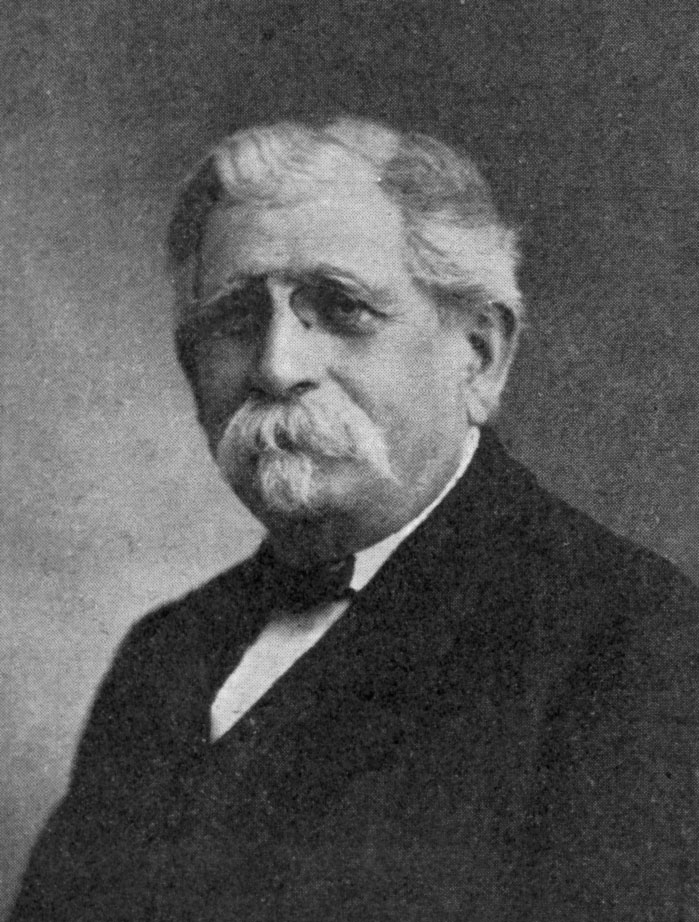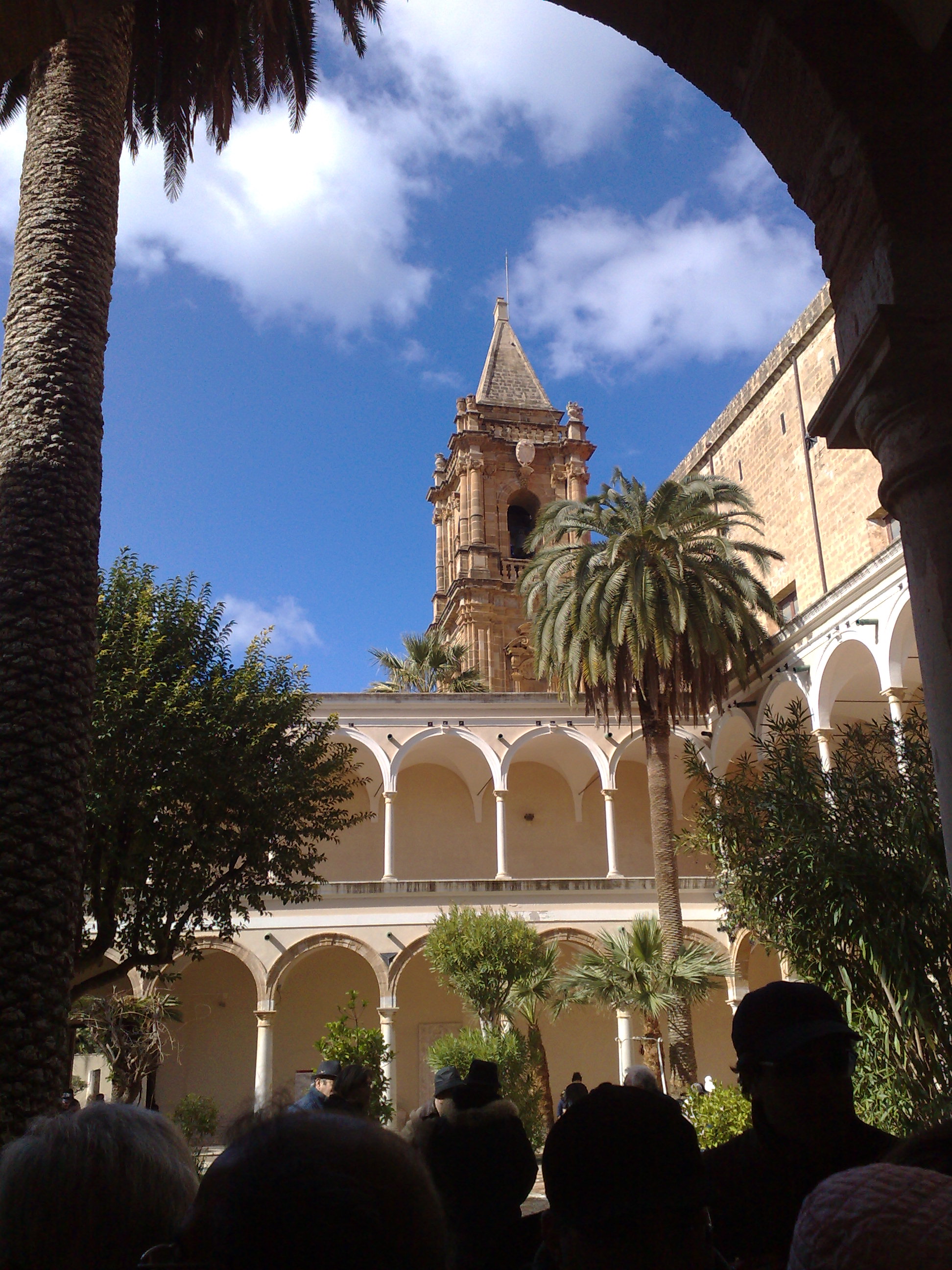|
Antonino Salinas
Antonino Salinas (19 November 1841 - 7 March 1914) was an Italian archaeologist and numismatist. Life Born in Palermo and educated in strict scientific methods from a young age, he entered the Jurisprudence Faculty at the University of Palermo in 1856 but joined the Southern Army after Garibaldi landed at Marsala four years later. On 13 July 1860 Salinas was made a sottotenente in the artillery, fighting at Volturno and Capua before being demobbed in January 1861 and granted a bronze medal in 1862. He returned to work in Palermo's city archives, publishing his first works - these were on his main passion of numismatics.Spatafora, cit. In 1862, for a year, he went to the Humboldt University of Berlin to complete his education, taking courses in archaeology taught by Eduard Gerhard, cartography by Heinrich Kiepert and history by Theodor Mommsen. He then took long study trips to Vienna, Athens (where he took part in the Missione Italiana's first excavations at the Ceramico ... [...More Info...] [...Related Items...] OR: [Wikipedia] [Google] [Baidu] |
Mozia
Motya was an ancient and powerful city on San Pantaleo Island off the west coast of Sicily, in the Stagnone Lagoon between Drepanum (modern Trapani) and Lilybaeum (modern Marsala). It is within the present-day comune, commune of Marsala, Italy. Many of the city's ancient monuments have been excavated and are visible today. Motya has become known for the marble statue of the Motya Charioteer, found in 1979 and on display at the local Giuseppe Whitaker museum. Names The Carthaginian settlement was written in their abjad as ( xpu, 𐤄𐤌𐤈𐤅𐤀) or ( xpu, 𐤌𐤈𐤅𐤀, possibly ''Motye''). The name seems to derive from the Phoenician language, Phoenician triliteral root , which would give it the meaning of "a wool-spinning center". Motya is the latinization of names, latinization of the island's ancient Greek language, Greek name, variously written ''Motýa'' () or ''Motýē'' (). The Greeks folk etymology, claimed the place was named for a woman named Motya wh ... [...More Info...] [...Related Items...] OR: [Wikipedia] [Google] [Baidu] |
Vincenzo Tusa
Vincenzo Tusa (12 July 1920 – 5 March 2009) was an Italian archeologist. Biography Vincenzo Tusa initially studied in Mistretta, and later obtained his degree in literature in Catania in 1944, going on to become an assistant in Archeology. In 1947 he was hired by the Superintendency of Antiquities in Bologna and two years later he was transferred to Palermo. In 1963 he assumed the position of Superintendent for the BBCC of western Sicily. During his time at the Superintendency, Tusa was responsible for promoting several excavations in the archaeological sites of Soluntum, Segesta, Selinunte, Motya, Marsala. In the 1960's Tusa was the promoter of the ''Sicilia Archeologica'' magazine, as well as professor of Punic Antiquities at the Faculty of Letters of the University of Palermo until 1991. Tusa was also a member of the Accademia dei Lincei for the Archeology category within the Moral Sciences class. His son, Sebastiano Tusa Sebastiano Tusa (2 August 1952 – 10 Ma ... [...More Info...] [...Related Items...] OR: [Wikipedia] [Google] [Baidu] |
Open Library
Open Library is an online project intended to create "one web page for every book ever published". Created by Aaron Swartz, Brewster Kahle, Alexis Rossi, Anand Chitipothu, and Rebecca Malamud, Open Library is a project of the Internet Archive, a nonprofit organization. It has been funded in part by grants from the California State Library and the Kahle/Austin Foundation. Open Library provides online digital copies in multiple formats, created from images of many public domain, out-of-print, and in-print books. Book database and digital lending library Its book information is collected from the Library of Congress, other libraries, and Amazon.com, as well as from user contributions through a wiki-like interface. If books are available in digital form, a button labeled "Read" appears next to its catalog listing. Digital copies of the contents of each scanned book are distributed as encrypted e-books (created from images of scanned pages), audiobooks and streaming audio (created f ... [...More Info...] [...Related Items...] OR: [Wikipedia] [Google] [Baidu] |
Persée
''Persée'' (''Perseus'') is a tragédie lyrique with music by Jean-Baptiste Lully and a libretto by Philippe Quinault, first performed on 18 April 1682 by the Opéra at the Théâtre du Palais-Royal in Paris. Roles Synopsis ACT I: The Palace of King Céphée and Queen Cassiope of Ethiopia King Céphée expresses the terror his people feel for the snake-haired Mèduse: anyone who looks on her turns to stone. The goddess Juno has sent Mèduse to punish Queen Cassiope for her insolence in comparing her own beauty to that of the goddess. In an effort to appease Juno's wrath, Cassiope has prepared a celebration of games in her honour. We learn that Mérope, the queen's sister, secretly loves Persée. However, Persée loves and is loved by Andromède, the king's daughter. Andromède is betrothed to Phinée, her uncle, who, in an agony of jealousy, accuses her of not returning his love, suspecting that she loves another. Andromède assures him that she will fulfil her duty to love ... [...More Info...] [...Related Items...] OR: [Wikipedia] [Google] [Baidu] |
1908
Events January * January 1 – The British ''Nimrod'' Expedition led by Ernest Shackleton sets sail from New Zealand on the ''Nimrod'' for Antarctica. * January 3 – A total solar eclipse is visible in the Pacific Ocean, and is the 46th solar eclipse of Solar Saros 130. * January 15 – Alpha Kappa Alpha Sorority is founded on the campus of Howard University, in Washington, D.C. * January 24 – Robert Baden-Powell's ''Scouting for Boys'' begins publication in London. The book eventually sells over 100 million copies, and effectively begins the worldwide Boy Scout movement. February * February 1 – Lisbon Regicide: King Carlos I of Portugal and Prince Luis Filipe are shot dead in Lisbon. * February 3 – Panathinaikos, a well known professional multi-sports club of Greece, is founded in Athens. * February 12 – The first around-the-world car race, the 1908 New York to Paris Race, begins. * February 18 – Japanese emigration to the United States is forbidden, un ... [...More Info...] [...Related Items...] OR: [Wikipedia] [Google] [Baidu] |
Accademia Nazionale Dei Lincei
The Accademia dei Lincei (; literally the "Academy of the Lynx-Eyed", but anglicised as the Lincean Academy) is one of the oldest and most prestigious European scientific institutions, located at the Palazzo Corsini on the Via della Lungara in Rome, Italy. Founded in the Papal States in 1603 by Federico Cesi, the academy was named after the lynx, an animal whose sharp vision symbolizes the observational prowess that science requires. Galileo Galilei was the intellectual centre of the academy and adopted "Galileo Galilei Linceo" as his signature. "The Lincei did not long survive the death in 1630 of Cesi, its founder and patron", and "disappeared in 1651". During the nineteenth century, it was revived, first in the Vatican and later in the nation of Italy. Thus the Pontifical Academy of Science, founded in 1847, claims this heritage as the ''Accademia Pontificia dei Nuovi Lincei ("Pontifical Academy of the New Lynxes")'', descending from the first two incarnations of the Academy. S ... [...More Info...] [...Related Items...] OR: [Wikipedia] [Google] [Baidu] |
Italian Numismatic Institute
The Italian Numismatic Institute (''Istituto italiano di numismatica'') is an Italian body for the study of numismatics, based in Palazzo Barberini at 13 Quattro Fontane, via Quattro Fontane. History It was founded in Rome in 1912 as a private association by a group of Italian numismatists, including Secondina Lorenza Cesano, an academic at Sapienza Università di Roma, Rome University.Annuario n. 49 dell'Unione Internazionale degli Istituti di Archeologia Storia e Storia dell'Arte in Roma, p. 327Giovanni Gorini, ''Cento anni della Rivista italiana di numismatica'' ", in ''Rivista italiana di numismatica'', XC, 1988. Initially ... [...More Info...] [...Related Items...] OR: [Wikipedia] [Google] [Baidu] |
1908 Messina Earthquake
The 1908 Messina earthquake (also known as the 1908 Messina and Reggio earthquake) occurred on 28 December in Sicily and Calabria, southern Italy with a moment magnitude of 7.1 and a maximum Mercalli intensity of XI (''Extreme''). The epicenter was in the Strait of Messina which separates Sicily from the Italian mainland. The cities of Messina and Reggio Calabria were almost completely destroyed and between 75,000 and 82,000 people died. It was the most destructive earthquake ever to strike Europe. Cause of the earthquake According to Italy's National Institute of Geophysics and Vulcanology, the earthquake was caused by a large, low-angle SE-dipping, blind normal fault, lying mainly offshore in the Strait of Messina, between plates. Its upper projection intersects the Earth's surface on the western, Sicilian side of the Strait. In 2019 researchers at Birkbeck, University of London discovered the active fault responsible for the earthquake. The study, led by Dr. Marco ... [...More Info...] [...Related Items...] OR: [Wikipedia] [Google] [Baidu] |
Messina
Messina (, also , ) is a harbour city and the capital of the Italian Metropolitan City of Messina. It is the third largest city on the island of Sicily, and the 13th largest city in Italy, with a population of more than 219,000 inhabitants in the city proper and about 650,000 in the Metropolitan City. It is located near the northeast corner of Sicily, at the Strait of Messina and it is an important access terminal to Calabria region, Villa San Giovanni, Reggio Calabria on the mainland. According to Eurostat the FUA of the metropolitan area of Messina has, in 2014, 277,584 inhabitants. The city's main resources are its seaports (commercial and military shipyards), cruise tourism, commerce, and agriculture (wine production and cultivating lemons, oranges, mandarin oranges, and olives). The city has been a Roman Catholic Archdiocese and Archimandrite seat since 1548 and is home to a locally important international fair. The city has the University of Messina, founded in 1548 ... [...More Info...] [...Related Items...] OR: [Wikipedia] [Google] [Baidu] |
Agrigento
Agrigento (; scn, Girgenti or ; grc, Ἀκράγας, translit=Akrágas; la, Agrigentum or ; ar, كركنت, Kirkant, or ''Jirjant'') is a city on the southern coast of Sicily, Italy and capital of the province of Agrigento. It was one of the leading cities of Magna Graecia during the Fifth-century Athens, golden age of Ancient Greece BC. History Akragas was founded on a plateau overlooking the sea, with two nearby rivers, the Sant'Anna (river), Hypsas and the Acragas, after which the settlement was originally named. A ridge, which offered a degree of natural fortification, links a hill to the north called Colle di Girgenti with another, called Rupe Atenea, to the east. According to Thucydides, it was founded around 582-580 BC by Ancient Greece, Greek colonists from Gela in eastern Sicily, with further colonists from Crete and Rhodes. The founders (Oikistes, ''oikistai'') of the new city were Aristonous and Pystilus. It was the last of the major Greek colonies ... [...More Info...] [...Related Items...] OR: [Wikipedia] [Google] [Baidu] |
Trapani
Trapani ( , ; scn, Tràpani ; lat, Drepanum; grc, Δρέπανον) is a city and municipality (''comune'') on the west coast of Sicily, in Italy. It is the capital of the Province of Trapani. Founded by Elymians, the city is still an important fishing port and the main gateway to the nearby Egadi Islands. History Drepana was founded by the Elymians to serve as the port of the nearby city of Eryx (present-day Erice), which overlooks it from Monte Erice. The city sits on a low-lying promontory jutting out into the Mediterranean Sea. It was originally named ''Drépanon'' from the Greek word for "sickle", because of the curving shape of its harbour. Carthage seized control of the city in 260BC, subsequently making it an important naval base, but ceded it to Rome in 241BC following the Battle of the Aegates in the First Punic War. Two ancient legends relate supposed mythical origins for the city. In the first legend, Trapani stemmed from the sickle which fell from the hands o ... [...More Info...] [...Related Items...] OR: [Wikipedia] [Google] [Baidu] |





